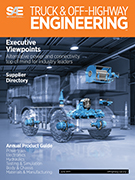Article
Army, SAE’s DATC team to fast-track new combat-vehicle development
2017-03-30
The Army hopes a new streamlined development and procurement process will facilitate aid from the automotive sector to design the next generation of combat vehicles.






